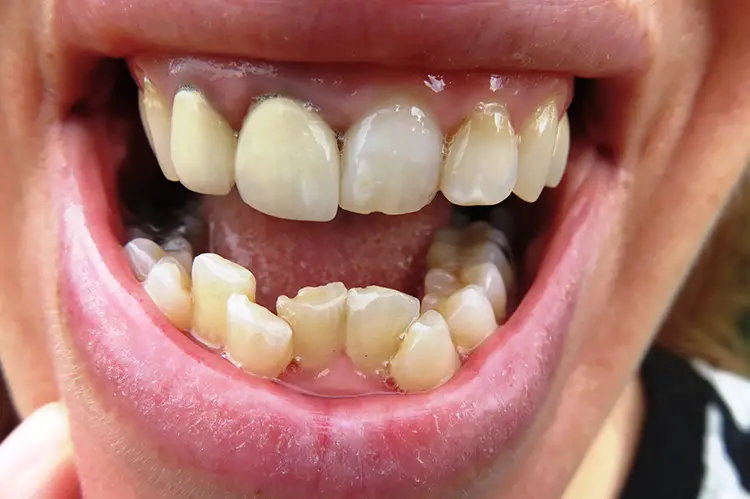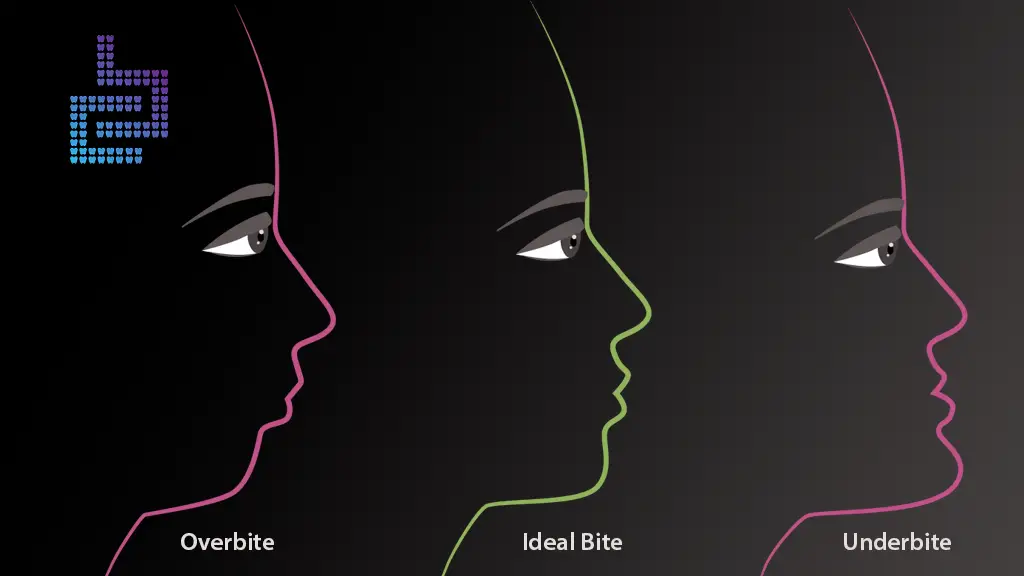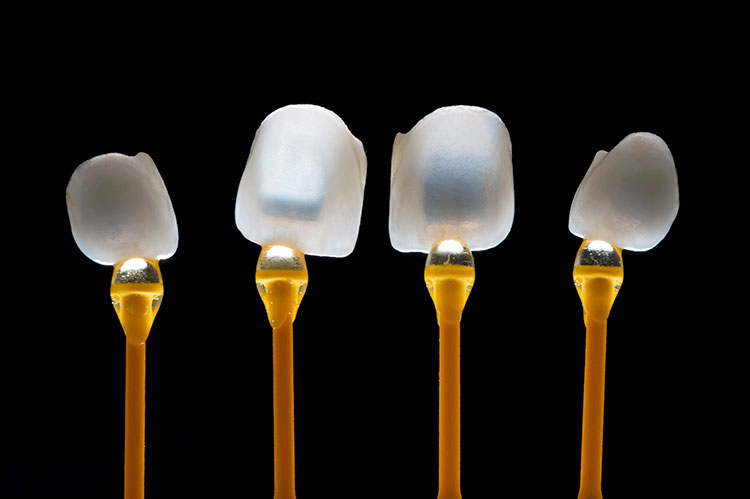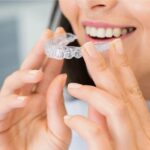A changing bite or changing face comes with age and is nothing to be ashamed of. “Just as your skin ages over time, your teeth will naturally shift as well,” notes Dr. Robert J. Herman in Oklahoma.
Elasticity, tooth movement, bruxing and jaw misalignment all fit within the parameters of normal aging. WebMD puts in simple terms: “As you get older, everyday wear and tear take a toll on your teeth. Your teeth are crazy strong. Still, they can be worn down. All that chewing, grinding, and biting … flattens the parts you use when you bite and chew. You can’t erase a lifetime of wear and tear, without having it restored by a dentist.”
In other words, wear and tear are sure to affect your teeth, jaw, and face over time — but that doesn’t mean that restoration isn’t possible. In this post, we want to address three questions:
- How does the human bite and shape of the face change over time?
- How does aging affect facial aesthetics?
- How can some of these effects be reversed?
How the Human Bite Changes Over Time
It’s no secret that your teeth and your bite are likely to change over time. With age, a person may see shifting teeth, bone loss, and receding gums.
Sheryl Kraft at HealthyWomen gives the example that women going into their 50s may start to see a change in appearance, with shorter top teeth and more prominent bottom teeth. This is just one example of how aging affects facial aesthetics.
What is it about the human bite that leads to these changes in appearance? To answer that, we’ll need to address the four major areas of change: elasticity, tooth movement, bruxing and jaw alignment.

What is Dental Elasticity?
The elastic property of teeth is exactly what it sounds like — the ability for your teeth to change position over time.
Dental elasticity is what allows braces and other interventions to correct alignment and bite. As My Smile Orthodontics from Connecticut notes, it’s also why orthodontic elastics are so important. But it also means that your bite and facial aesthetic may change over time if the changes go untreated.
What Does Tooth Movement Look Like Over Time?
Tooth movement is a natural progression that comes with age, but it can be corrected. Henson Family Dental in Florida notes that tooth movement can take three forms: spreading apart, overlapping or collapsing inward. This is caused by the force of time and pressure and can be corrected with an external force.
In the European Journal of Orthodontics, Catherine Giannopoulou and her co-authors assessed how fast or slow tooth movement can be. “Orthodontic tooth movement is a complex process involving the application of mechanical force, a biologic response as well as the genetic and environmental interaction,” the researchers concluded. The study found that tooth movement depends on the magnitude, frequency, and duration of the intervention — and involves a biological response from the ligament and bone.
In other words, correcting improper tooth movement requires a firmly guided touch, with results only seen over a substantial amount of time. There are quite a few approaches to correction, ranging from jaw surgery to non-surgical facial profile correction.
What is Bruxing?
According to the Consumer Guide to Dentistry, chronic bruxing affects 1 out of 5 people during waking hours and nearly 1 out of 10 people during sleep. The guide warns that bruxing “can have a negative effect on tooth enamel, bone, gums, and the jaw.” Not only that, but bruxing is affected just as much by anxiety and stress in our life as having a bad bite in the first place.
Bruxing presents itself in two ways: grinding and clenching teeth. Denta Gama, a dental social network, notes that grinding is related to disturbances in the central nervous system and occurs at night. In contrast, clenching “is more commonly observed during awake bruxism, when the person is either under some sort of work pressure, working with intense concentration or feeling stressed.” If it goes unaddressed, bruxing can have a profoundly negative impact on your dental health. It can wear down front teeth, cause cracks in your teeth, lead to gum recession and induce headaches or aching jaws.
How Does Jaw Alignment Change Over Time?
Tooth movement is not the only effect of age on your mouth. Another crucial part of the jaw is the temporomandibular joint (TMJ). As MedCenter TMJ notes, “The daily wear and tear on the TMJ can cause not only irritation but misalignment as well.” The joint requires a smooth and efficient process to function.
Over time, this process can be misaligned, causing an overbite or underbite. According to Jenny Green at Colgate, these are the two most common consequences of jaw misalignment. Just like bruxing, jaw pain and misalignment are not uncommon. According to the Oral Health Foundation, around 1 in 4 people have some symptoms of jaw misalignment, including headaches. For women, symptoms often begin with menopause.
Thankfully, this alignment can be reversed with the right kind of intervention. “The proper aesthetic and functional reconstruction of endodontically treated teeth is a crucial factor for the long-term success of the rehabilitation,” Ana Maria Estivalete Marchionatti and her co-authors write in the Orthodontology Review.
Put simply, the ability for professionals to treat tooth and jaw alignment leads to both a functional and aesthetic improvement. Let’s jump into how that works.
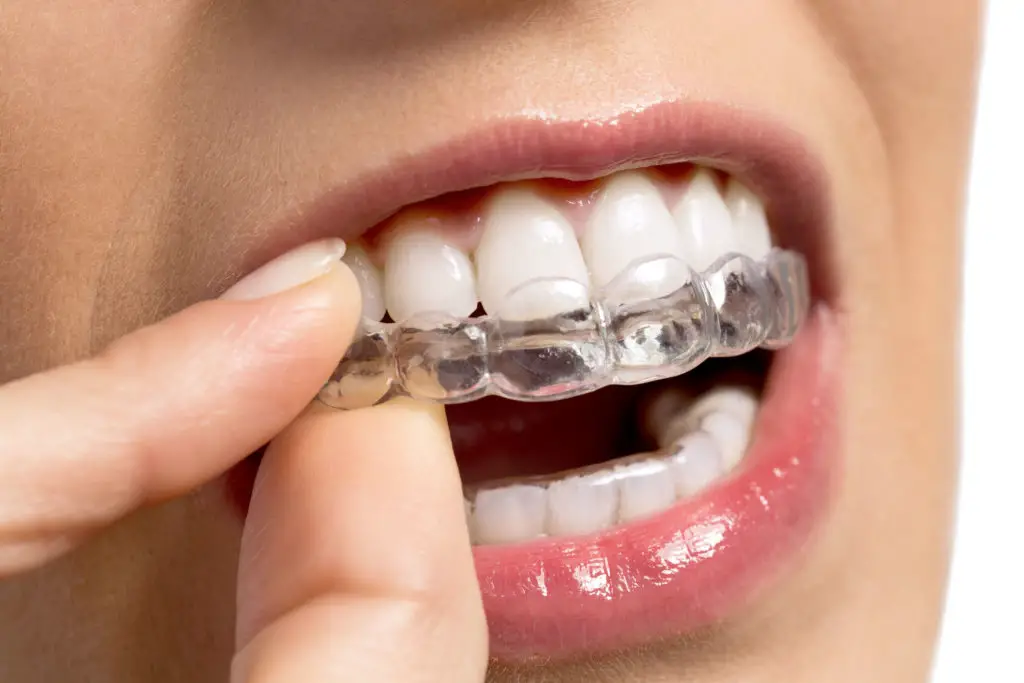
The Aesthetic Impact of Elasticity and Jaw Alignment
All of these changes make up what Harvard’s Healthbeat call the “structural rearrangements going on behind the scenes” that impact the appearance of your face. The structural changes can shorten teeth, make jawlines less distinguished, and cause sagging skin or thinned lips.
Dr. Derek M. Steinbacher highlights the most common effects of aging in the face, including bone resorption, loss of teeth, bone shrinkage in the jaw and the extension of the chin. The end result is often a change in appearance in your lips, jawline and teeth. Dr. Steinbacher concludes that “the ability to alter facial aging is the here-and-now, and can improve function and alter our human experience.”
Last year, Teruko Takano-Yamamoto and several co-authors studied the impact and speed of purposeful tooth movement. “Orthodontic treatment can enhance the quality of life of patients with malocclusion by improving aesthetics, stomatognathic function, and psychological disorders,” the authors note from the beginning. Correcting a bad bite, then, can make it easier to eat and drink, improve your self-esteem and simply improve your facial aesthetics.
The Mayo Clinic reports that taking corrective action for jaw alignment can not only improve the function of your bite but also improve your facial appearance. As a Healthline guide reviewed by Steven Kim, MD, notes, the sooner poor jaw alignment is addressed the better the results in the long term.
Case Studies in Aging and Facial Aesthetics
So far, this post has highlighted the numerous ways that aging impacts facial aesthetics through elasticity, tooth movement, bruxing and jaw alignment. The good news is these aesthetic and functional changes do not have to be permanent.
For example, one of our patients wore braces years ago but did not see long-lasting changes. She still suffered from clenching and grinding with an overbite. Instead of jaw surgery, the patient opted for JawTrac®, designed to bring the jaw back to its natural position. With this treatment, the patient received relief from her pain and enjoyed an improvement in her jawline without any invasive surgery.
Another patient suffered from an overbite and bruxism, which was causing thinning lips and a rounder face. The Dental Face Lift® treatment optimized the patient’s facial features and bone structure from both a cosmetic and physical perspective. The solution created a longer look in the face and better facial support with the jaw position. At the same time, VENLAY® Restorations were used to correct the overbite.
Finally, a 65-year old patient had become self-conscious of her squeezed lips and a worn down bite. The Face Lift Dentistry® solution approach offered the patient facial support and lip support, as well as a comfortable jaw position, bringing a younger shape to her face. The aesthetic effects of aging were improved without any kind of invasive intervention or surgery.
You Have Options for Correcting Elasticity, Tooth Movement, Bruxing and Jaw Alignment Over Time
These case studies — along with the insight from several experts in this post — make it clear that the facial aesthetics of age can be improved with the right kind of intervention. These physical changes might occur naturally, but they do not have to be permanent.
Images by: Kurhan/©123RF Stock Photo, Kurhan/©123RF Stock Photo, didesign021/©123RF Stock Photo


